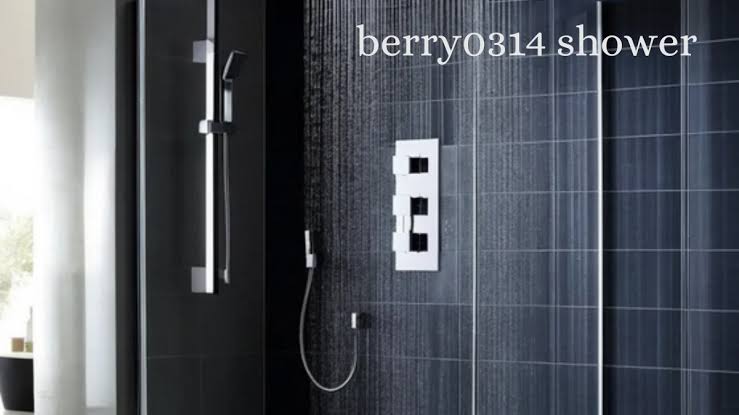School Pest Control: Classrooms and Kitchens

You must implement effective school pest control measures in classrooms and kitchens to maintain a safe and healthy learning environment. Pests like cockroaches, rodents, and bed bugs can spread diseases, trigger allergies, and contaminate food, posing significant risks to students and staff. By partnering with a reputable pest control provider, you can prevent infestations and guarantee compliance with relevant regulations. A robust pest control policy, regular inspections, and child-safe control measures will help minimise risks associated with pest infestations. By taking proactive steps, you’ll be better equipped to tackle the complex challenges of school pest control and secure a healthier environment.
Benefits of School Pest Control
When it comes to maintaining a healthy and safe learning environment, you can’t afford to overlook the importance of school pest control. This service offers numerous benefits that extend far beyond eliminating unwanted critters. Implementing effective pest control measures minimises the risk of pest infestations, ensuring a healthy and safe space for students and staff.
Humane and environmentally friendly methods can help mitigate the impact of pests on the environment. This, in turn, reduces health risks by mitigating pest-borne diseases and allergies, promoting a more productive workspace. You also enable your school to meet compliance with relevant regulations.
Additionally, a pest-free environment increases staff productivity, allowing them to focus on their duties. Proactive pest control protects your school’s reputation by maintaining a clean, pest-free environment, which is essential for a positive and inclusive learning community.
Common Pests in Schools
You’ll encounter various pests in schools, including cockroaches, rodents, ants, wasps, bees, pigeons, and silverfish, each posing unique health risks and challenges.
These pests can spread diseases, trigger allergies, and create unsanitary conditions that affect students and staff. To manage these risks, you must understand the types of school pests, the diseases they can spread, and strategies for preventing infestations.
Types of School Pests
What kinds of pests can schools expect to encounter? Considering your school’s pest control strategy, knowing the types of pests that can infiltrate your facilities is crucial.
You’ll need to be on the lookout for a variety of pests, including:
- Cockroaches, which can contaminate food preparation areas and spread bacteria in school kitchens
- Mice and rats can carry diseases, damage property, and pose fire hazards in school buildings
- Bees, wasps, and hornets which can pose a severe stinging risk to students and staff, especially those with allergies
These pests can compromise your students’ and staff’s health, safety, and overall well-being. By understanding the types of pests that affect your school, you can take proactive steps to prevent infestations and maintain a safe and healthy learning environment.
Diseases From School Pests
Schools face a multitude of health risks due to diseases spread by common pests. To keep students and staff safe, you need to be aware of the dangers posed by these pests.
Mice and rats can transmit diseases like Salmonella, Hantavirus, and Leptospirosis through their urine, droppings, and bites. Cockroaches spread bacteria like Salmonella and E. coli, triggering asthma and allergy attacks.
Flies contaminate food and spread illnesses like dysentery, gastroenteritis, and typhoid fever. Wasps and bees deliver painful stings, which can be life-threatening for those with allergies.
Pigeons carry diseases like Histoplasmosis, Cryptococcosis, and Psittacosis through their droppings and feathers. Understanding the risks associated with these pests is crucial to maintaining a healthy and safe school environment. You must take proactive measures to prevent infestations.
Preventing School Infestations
Effective prevention of school infestations requires a thorough understanding of the common pests that threaten student and staff health. You must know the pests that can infest your school, such as rodents, cockroaches, ants, and wasps. These pests can spread diseases, contaminate food, and pose fire hazards.
To prevent infestations, consider the following:
- Proper sanitation and hygiene practices should be maintained in classrooms and kitchens to reduce the presence of food sources and breeding environments.
- Proof your buildings by sealing all cracks and crevices to prevent pest entry.
- Partner with a professional pest control provider to identify vulnerabilities and implement effective prevention and management strategies. By taking these steps, you can help prevent pest infestations and guarantee a healthier environment for students and staff.
School Pest Control Services
School pest control services play a critical role in identifying, treating, and preventing pest infestations in educational establishments through a combination of proactive inspections and targeted treatments. You utilise these exhaustive solutions to guarantee students and staff a safe and healthy learning environment.
By employing experienced technicians who use advanced pest detection methods and child-safe control measures, you address issues with rodents, insects, and other common pests found on school premises. Your tailored pest control contracts and service-level agreements ensure you receive prompt, reliable, and cost-effective solutions throughout the academic year.
This helps maintain effective pest control programs, provides evidence of due diligence, and meets relevant health and safety regulations, such as the Food Safety Act 1990.
Importance of Pest Prevention
If you don’t prevent pest infestations in your school, you face significant risks, including potential closures, disruptions to the educational process, and health risks to students and staff.
Typical school pests like cockroaches and rodents thrive in kitchens, food stores, and dining halls, making proactive measures essential. To mitigate these risks, you must implement effective prevention measures, which we’ll explore in more detail.
Risks of Pest Infestations
A pest infestation in a school setting poses significant risks to students’ and staff’s health, safety, and well-being. Pest prevention is essential to avoid these risks. Pests can contaminate food, spread diseases, and cause allergic reactions, disrupting the learning environment.
Some pests pose specific hazards, such as:
- Cockroaches, mice, and rats contaminate food preparation areas and pose serious public health risks in school kitchens
- Wasps and bees pose a significant stinging hazard, especially for children with allergies
- Pests like pigeons cause structural damage and spread respiratory illnesses
Unaddressed pest problems can result in costly unplanned closures and damage to the institution’s reputation. Pest prevention must be prioritised to maintain a safe and healthy environment for students and staff.
Common School Pests Found
While maintaining a pest-free environment is indispensable in any setting, it’s especially imperative in schools where the health and well-being of students and staff are at stake. You need to be aware of the common pests that can infest schools.
Cockroaches, rodents, and ants are prevalent in kitchens and food preparation areas, posing serious health risks and contamination concerns. Wasps and hornets can build nests on school premises, potentially stinging students and staff. Pigeons and their droppings can spread respiratory illnesses and cause structural damage. Bed bugs can infest classrooms and dormitories, leading to discomfort and distraction.
Understanding the types of pests that can infest schools is essential to maintaining a healthy and safe learning environment. Effective pest prevention measures are vital to prevent these pests from taking hold.
Prevention Measures Needed
Effective pest prevention measures are indispensable for maintaining a safe and healthy school learning environment. You must take proactive steps to prevent pest infestations, which can lead to school closures and health risks.
Properly store food and regularly clean your facilities to eliminate food sources and habitats that attract pests like rodents, cockroaches, and ants—seal entry points to prevent pests from entering your school.
Partner with a reputable pest control provider to guarantee thorough pest prevention and management strategies tailored to your school’s needs.
Creating a Pest Control Policy
Your school’s pest control policy is critical to maintaining a safe and healthy learning environment. You’re legally required to have one in place to manage pest infestations and protect students and staff.
An effective policy should outline procedures for regular inspections, pest monitoring, treatment methods, staff training, and compliance with relevant legislation. Implementing an extensive policy will help protect against health risks, prevent property damage, and avoid costly school closures.
It’s necessary to tailor your policy to your school’s specific needs and review it regularly to address any changes in the pest landscape or legal requirements. Partnering with a reputable pest control company can provide valuable support and expertise in creating and maintaining an effective policy.
Implementing Pest Control Measures
School administrators play a critical role in protecting students and staff from the risks associated with pest infestations. To implement effective pest control measures, you must take a proactive approach.
Conduct regular inspections to identify entry points, food sources, and pest habitats in classrooms and kitchens.
Implement Integrated Pest Management (IPM) strategies, including exclusion, sanitation, and targeted treatments.
Use child-safe and eco-friendly pest control methods to guarantee the safety of students and staff.
To maintain a proactive approach, you should also provide staff training on pest identification, prevention, and reporting protocols. Establish clear communication channels with pest control providers to ensure prompt response and effective management of any pest-related issues. This will help you create a safe and healthy learning environment.
Maintaining a Pest-Free Environment
Throughout the year, maintaining a pest-free environment is essential to minimise the risks associated with pest infestations in schools. You must guarantee that your school’s pest control measures effectively prevent infestations, particularly during school breaks when pests thrive in empty premises.
As a school administrator, you must comply with regulations like the Food Safety Act 1990 and the Food Hygiene (England) Regulations 2006 to maintain food safety and hygiene standards. Pests like rodents, cockroaches, and ants pose significant public health risks, especially to children and infants.
For help with pest control, contact Bugwise Pest Control today for prompt and dependable service. Our team, with extensive industry experience, is prepared to respond swiftly and effectively to emergencies. Trust us to handle the job efficiently. We serve various locations, including Romford, Dagenham, Barking, Ilford, and the surrounding areas.



